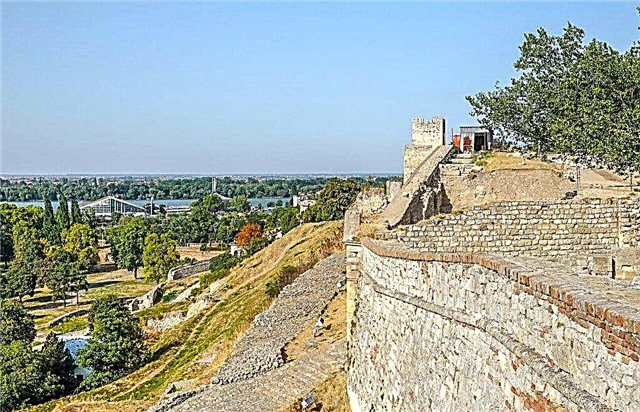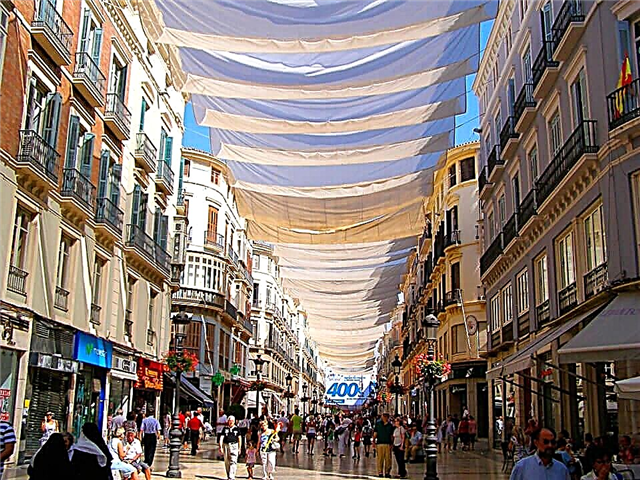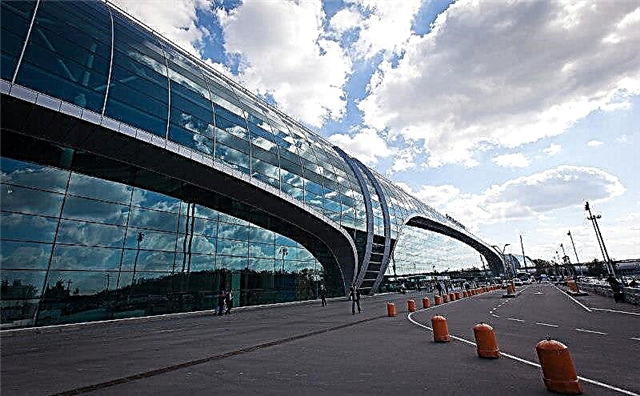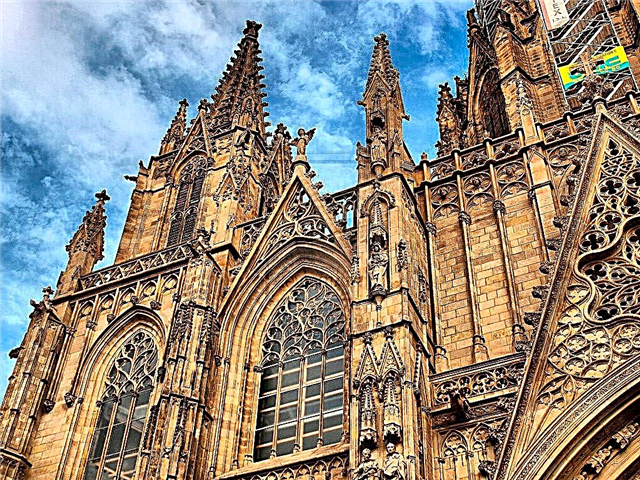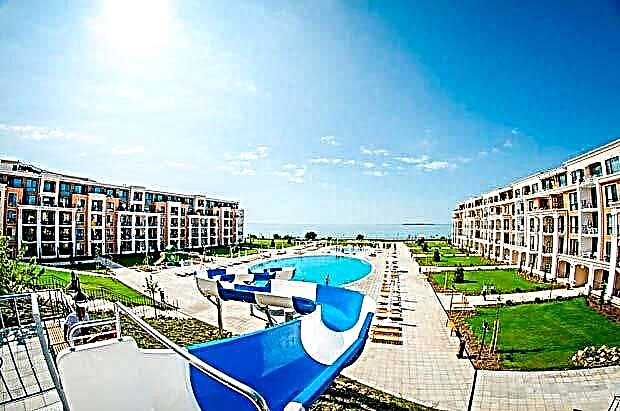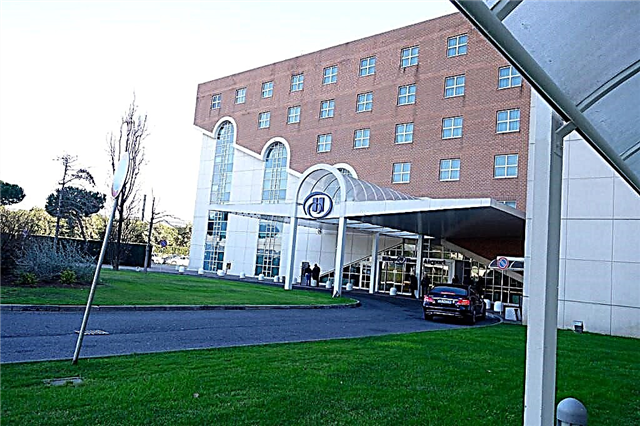The Shchelykovo estate located in the Kostroma region became famous as the place where the family of Alexander Nikolaevich Ostrovsky lived for many years. The writer loved the endless expanses of Shchelykovo, the ravine banks of the small river Kueksha, the mighty forests, local peasants and, of course, his house and the picturesque park surrounding it. Today, the memory of the playwright and the traditions of Ostrovsky's theater is kept in the museum-reserve created in the estate.
The history of the estate of A. Ostrovsky Shchelykovo
Initially, the lands on which the estate now stands were called the Shalykovo wasteland, and from the 17th century they were owned by the Kutuzovs. In the 70s of the 18th century, the house built by the Kutuzovs burned down in a fire, and they did not begin to restore it. Construction of a new estate by F.M. Kutuzov organized it elsewhere.

Monument to A.N. Ostrovsky on the territory of the Shchelykovo estate
Half a century passed and the manor buildings were bought from the auction by the father of the writer Ostrovsky - Nikolai Fedorovich. In those days, an old house and three small outbuildings where a servant lived were located on the territory. In addition, there were many auxiliary buildings: a stone smithy and a stable, a barn and several cellars, sheds and a bathhouse.
Nikolai Fedorovich with his second wife and children moved to the Kostroma estate in 1848. His eldest son - Alexander liked the place very much. Sharing in his diary his impressions of the first visit to the estate, he wrote that the present Shchelykovo is better than the imagined, and the local nature turned out to be better than dreamed of. True, while his father was alive, Alexander came to the estate only twice, since their relationship was tense.

View of the house-museum of A.N. Ostrovsky
After the death of Nikolai Ostrovsky, his second wife sold the estate to Alexander and his brother Mikhail, and the writer's wife Maria Alexandrovna became the boss of the house. In material terms, the acquisition did not meet Ostrovsky's hopes. The estate did not bring any income at all, but, on the contrary, demanded more and more money injections from the family. However, the Ostrovskys were not discouraged. In his free time from the main work, the playwright enjoyed working in the garden, prescribing high-quality seeds, buying horses, agricultural equipment and pedigree livestock.

View of the southern facade of the building with a covered terrace
Their large and cozy house was constantly visited by guests - colleagues of Alexander Nikolaevich, famous writers, actors and artists. And the Ostrovsky family gladly accepted them, setting up literary and musical evenings.
In addition, the playwright worked actively. Of the 47 plays written by him, about half were created directly in Shchelykovo. Ostrovsky and died at work, while in his writing office.

View of the southern facade of the building with a covered terrace
After the revolutionary events of 1917, at first, no one cared about preserving the Ostrovskys' heritage. The buildings of the estate were occupied by the local authorities of the Soviet government, and later - a colony for street children.
Actors of the Maly Theater from Moscow stood up for Ostrovsky's theatrical heritage. Thanks to their petitions, the estate was given to the writer's memorial museum, and the first exhibition, located in only three rooms, was opened to visitors in 1936. Today, a large museum-reserve has been created on the estate. In addition, the buildings of the sanatorium were built here.

View from the southern facade of the building to the stairs leading to the lower gazebo
Walk through the museum complex
Nowadays, the Kostroma estate has the status of a museum-reserve, which includes a whole complex of memorial and natural objects. The central part of the estate is the writer's house. The furnishings, interiors, furniture and personal belongings of the writer - all the staff of the museum tried to preserve exactly as it was under Ostrovsky himself.
The house of the writer's family is very cozy, habitable and has a unique spirit of antiquity. Unpainted floors are covered with homespun paths, window sills are decorated with flowers, and the rooms have white tiled stoves. Some of the most valuable exhibits are lifetime editions of the writer's works, as well as paintings by artists Konstantin Makovsky and Boris Kustodiev.

Dining room in the house of A. Ostrovsky
In the spacious living room there is a piano, which the writer's wife, the actress of the Moscow Maly Theater in Moscow, Maria Vasilievna, loved to play. She left her profession early and took up the daily care of the family and home improvement. On the writing table are the playwright's manuscripts, as well as books and dictionaries that he used in his work. And on the mezzanine floor there are rooms for the Ostrovsky children.
The guided tour of the house takes about two hours. Here you can see many old photographs depicting Ostrovsky himself, his wife, children and friends of the playwright's family. For guests, photographing in this part of the museum is paid. In addition, if you wish, you can take a photo in the house in noble clothes, in the interiors of the dining room of the writer's family.

South living room in the house of A. Ostrovsky
In addition to the memorial, an interesting literary and theater museum has been opened in Shchelykovo since 1973, which introduces theatrical performances based on the plays of the great Russian playwright. In its halls you can see theatrical costumes, preserved sets and models, sketches by artists and magazines in which the writer's works were published. a separate part of the exposition is devoted to how the famous fairy tale about the Snow Maiden was created.
The third museum of the estate complex is the house-museum of Ivan Viktorovich Sobolev, a close friend of the playwright and an excellent master of wood carving. All carved furniture in the manor house is the work of his hands. This skilled craftsman even taught Ostrovsky himself the basics of carpentry. Sobolev's chopped hut is an ethnographic part of the estate's exposition, which tells about the traditions of peasant life and crafts that were common in these places in the 19th century.

A. Ostrovsky's study in the Shchelykovo estate
An elegant two-story building, built at the beginning of the last century by order of the writer's daughter, Maria Chatelain, is called the Blue House. This building has been perfectly preserved to this day. It houses a museum box office, as well as an educational center and a library. In winter, the residence of the fabulous Snow Maiden opens here.
On the territory of the reserve there is a functioning Nikolsky temple, which appeared at the end of the 18th century. The project of the slender church was prepared by the famous architect from Kostroma Stepan Andreevich Vorotilov. The talented architect managed to combine several architectural traditions in the rural church - from baroque to classicism. On the upper floor of the church, services are held in the summer months, and on the lower floor, in the winter. It was in this temple that the writer's funeral service was performed in 1886. Ostrovsky, his wife and their daughter Maria Alexandrovna are buried near the church, on a cemetery fenced with a brick fence.

Literary and Theater Museum on the territory of the Shchelykovo Museum-Reserve
It is not for nothing that Shchelykovo is called a natural reserve. The existing landscape memorial park is beautiful, and it is a pleasure to walk in it! Three generations of the Ostrovsky family have been involved in the planning and maintenance of green spaces.
The territory is indented by numerous ravines and is divided into two parts - the Upper and Lower parks, in which pine, birch, linden and spruce grow. Picturesque bridges are laid across park ravines, and beautiful flower beds are laid out in various places. The two-story wooden gazebo was named by the children of the writer "Snegurochkina", because it was in it that he pondered his famous fairy tale.

Blue house, in winter the residence of the Snow Maiden
There are special programs for children in the reserve. These are meetings with the Snow Maiden, traditional folk games, tea drinking and fortune-telling. Craftsmen conduct special classes for the guests of the estate and teach them how to make amulet dolls. And twice a year the museum-reserve invites everyone to big holidays. In mid-June, Ostrovsky's Day of Remembrance is celebrated here, and in September Shchelykovsky Readings are held.
Manor opening hours
All objects on the territory of the estate are open to visitors every day from 9.30 to 17.45, except Monday. When services are held in St. Nicholas Church, there are no excursions inside the temple.

Scenic paths in the park of the museum-reserve
How to get there
The estate is located 18 km north of Kineshma and 120 km from the regional center - the city of Kostroma, not far from the village of Shchelykovo. By buses. From Kostroma with one change. First - to the village of Ostrovskoe, and then - by another bus to Kineshma. If you get from Kineshma, but you need to go by bus "Kineshma - Ostrovskoe".
By car. The distance from Kineshma to Shchelykovo along the P101 highway through Zavolzhsk and Komarovo is 32 km. From the turn to Shchelykovo to the estate - 1.5 km.
Attraction rating:

